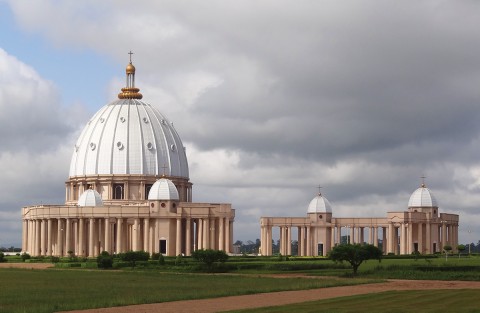The fascinating story of the Ivory Coast’s mega-basilica
Why is the world’s largest church building in Yamoussoukro?

There is notable architecture, there is odd architecture, and there is a church in the African city of Yamoussoukro that falls equally into both categories. This is the Basilica of Our Lady of Peace, a colossal structure which is the world’s largest single church building of any denomination, substantially bigger than its nearest competitor, St. Peter’s in Rome. The Basilica of Our Lady of Peace is a strikingly traditional design with a dome that recalls St. Peter’s (although taller), and the whole richly ornamented edifice looks like a monument to Europe’s Tridentine faith, although it was dedicated only in 1990. The obvious question arises: What on earth is it doing there, just a little north of the equator, in the nation of Côte d’Ivoire (Ivory Coast)?
The story involves multiple mysteries. Yamoussoukro is a substantial city, but it is dwarfed by the vital and fast-growing metropolis of Abidjan, less than 150 miles away. So why is the mega-basilica located in the smaller city?
Nor is Côte d’Ivoire a notably zealous country, and still less is it a bastion of Catholic devotion. Of some 27 million Ivorians today, 43 percent are Muslim, 17 percent Catholic, and 17 percent other Christians. Animists comprise a solid share of the remainder but so do people who frankly declare that they have no religion in particular, which is quite a rare state of affairs in Africa. When the basilica was designed and built in the 1980s, Côte d’Ivoire had well under 2 million Catholics. In terms of its religious culture, the country at that time was regarded as a delightful refuge from the tribal and interfaith struggles that beset other nations in the region.




